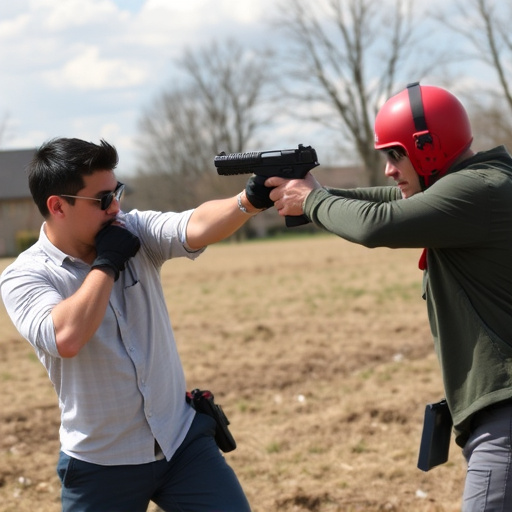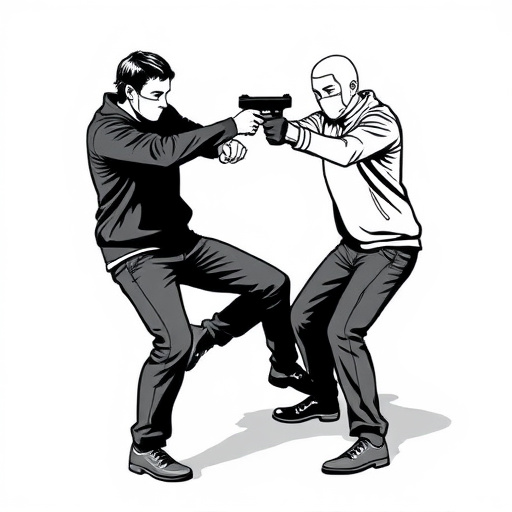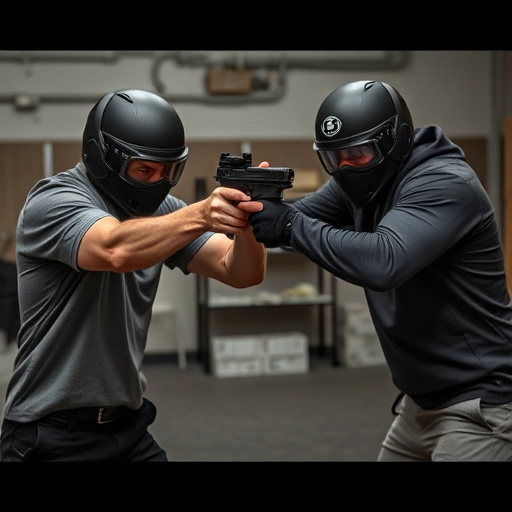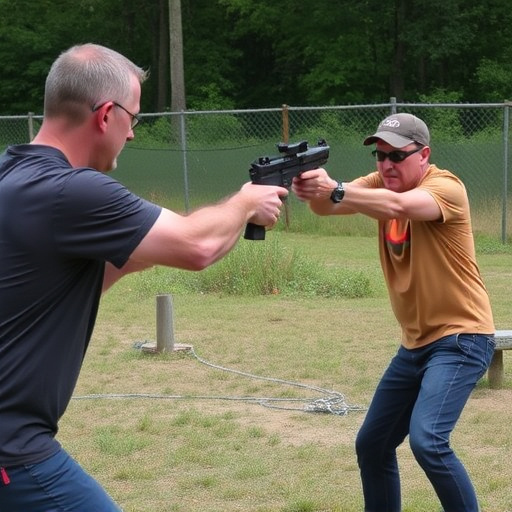Understanding electrical current patterns is key for safe and effective use of stun guns with safety features designed for beginners. These devices emit high-voltage, low-current pulses contained within a limited radius to maximize incapacitation while minimizing damage. Beginner-friendly stun guns feature advanced safety mechanisms like triggers and switches, requiring firm press or deactivation for added protection during learning and carrying. Analyzing current spread patterns is vital for optimizing device design, ensuring effectiveness with minimal harm, especially for users with varying experience levels. Prioritize safety through proper training, manufacturer guidelines, equipment inspection, PPE use, and regular maintenance checks for high-voltage systems.
Electrical current spread pattern analysis is crucial for understanding the effectiveness and safety of stun guns. This article delves into the basics of electrical current flow, focusing on how it spreads upon contact. We explore safety features in stun guns designed for beginners, analyzing the mechanisms that ensure controlled delivery. By understanding current spread, users can make informed decisions about safe application and maintenance practices. Key topics include best practices for novice stun gun owners and the latest innovations in safety-focused designs.
- Understanding Basic Electrical Current Patterns
- Safety Features in Stun Guns for Beginners
- Analyzing Spread of Current in Stun Gun Applications
- Best Practices for Safe Use and Maintenance
Understanding Basic Electrical Current Patterns

Understanding basic electrical current patterns is paramount, especially for those new to weapons like stun guns equipped with safety features. When a stun gun delivers a shock, it creates a rapid and intense electrical pulse that disrupts the body’s normal muscle control. This interference results in a distinctive spread pattern of the electric current, affecting a wide area around the point of contact.
The current spread can be visualized as a wave moving through various tissues—muscles, nerves, and even bones—causing them to contract uncontrollably. The safety features built into stun guns are designed to ensure that this high-voltage, low-current (HVLC) pulse is contained within a limited radius, minimizing damage while maximizing the incapacitating effect. By studying these current spread patterns, users can learn to employ the device safely and effectively, making it a valuable tool for self-defense with minimal risks.
Safety Features in Stun Guns for Beginners

Stun guns, especially those designed for beginners, come equipped with various safety features to ensure responsible use and minimize risks. One of the primary mechanisms is the stun trigger, which requires a firm press to activate, preventing accidental discharge. This simple yet effective feature allows users to have control over when the device is activated, reducing the chances of unintentional shocks.
Additionally, many stun guns for beginners incorporate safety switches or lockouts that provide an extra layer of protection. These switches can be set to ‘on’ for use or ‘off’ to deactivate the device, making them ideal for scenarios where a user might want to carry the stun gun but not have it readily activated. This is particularly beneficial for individuals learning how to handle such devices, ensuring they understand the importance of safety precautions and responsible ownership.
Analyzing Spread of Current in Stun Gun Applications

The analysis of electrical current spread patterns is crucial in understanding the performance and effectiveness of stun guns, especially those designed with safety features for beginners. When a stun gun delivers an electric shock, the current follows the path of least resistance through the body. By studying this flow, manufacturers can optimize the device’s design to ensure maximum impact while minimizing harm. This involves careful consideration of factors like electrode placement, current intensity, and duration, all aimed at creating a safe but potent shock.
For stun guns with safety features tailored for beginners, this analysis is paramount. It helps in determining how the current spreads across the target area, ensuring it’s sufficient to incapacitate without causing severe or inappropriate damage. This is particularly important for users who may lack experience or training, as a well-designed stun gun should be easily controllable and predictable in its effects.
Best Practices for Safe Use and Maintenance

When engaging in any electrical work, including analyzing current spread patterns, safety should be paramount. For beginners especially, it’s crucial to familiarize yourself with essential best practices and tools designed for safe operation. One such tool that can enhance safety during this analysis is stun guns equipped with advanced safety features. These devices not only ensure user protection but also provide a reliable means to manage electrical risks effectively.
Proper training and adherence to manufacturer guidelines are vital. Always inspect equipment before use, ensuring all components are in good working condition. Additionally, maintain a safe distance from live wires and components, adhering strictly to personal protective equipment (PPE) protocols. Regular maintenance checks can prevent accidents, making it easier to identify and rectify potential hazards, especially when dealing with high-voltage systems or intricate current spread patterns.
Electrical current spread pattern analysis is key to understanding the effectiveness and safety of stun guns, especially for beginners. By examining how current spreads across the contact points, users can ensure they employ these devices responsibly and effectively. Stun guns with safety features are designed to minimise risks, ensuring a controlled discharge and targeted impact. Following best practices for use and maintenance is essential, allowing users to harness the power of stun guns while prioritizing personal safety and responsible handling. For beginners, understanding these principles is crucial in making informed decisions when choosing and using stun guns with safety features.
